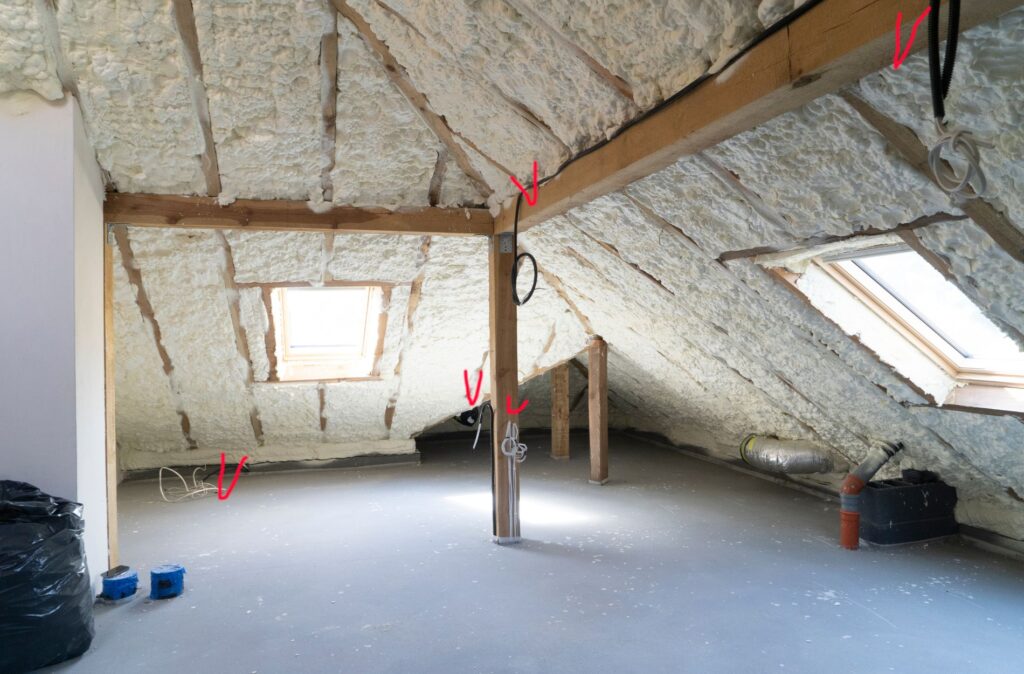Choosing the right insulation for your home is essential for maintaining a comfortable and energy-efficient environment. Insulation helps regulate your home’s temperature by keeping it warm in the winter and cool in the summer. With the right insulation, you can significantly reduce your energy bills and create a more consistent indoor climate.
However, picking the right insulation isn’t always straightforward. There are various types of insulation available, each with its own set of benefits and drawbacks. Factors like your home’s location, the climate, and the specific areas you need to insulate can all influence your choice. Understanding these factors will help you make an informed decision that suits your home’s unique needs.
In addition to choosing the right material, proper installation is crucial for insulation to perform effectively. Poor installation can lead to gaps and uneven coverage, reducing the insulation’s effectiveness. By following the correct steps and possibly seeking professional help, you can ensure your insulation works at its best and provides long-lasting benefits for your home.
Understanding Different Types of Insulation
There are several types of insulation, each designed to serve different needs. Understanding these options can help you choose the best insulation for your home.
Fiberglass Insulation:
Fiberglass insulation is one of the most common types. It usually comes in batts or rolls and is made of fine glass fibers. It’s easy to install and is effective at reducing heat transfer. This type is often used in attics, walls, and floors.
Spray Foam Insulation:
Spray foam insulation is applied as a liquid that expands and fills gaps and cracks. It provides excellent thermal resistance and is great for sealing air leaks. Spray foam is often used in hard-to-reach areas and provides a high R-value per inch, making it very efficient.
Cellulose Insulation:
Made from recycled paper products, cellulose insulation is eco-friendly and provides good thermal performance. It is usually blown into attics and walls, giving it a dense, effective coverage. It is also treated to be fire-resistant and pest-resistant.
Rigid Foam Insulation:
Rigid foam insulation comes in panels and offers a high insulating value. It is typically used for insulating foundation walls, basement walls, and flat roofs. This type is known for its strength and moisture resistance.
Mineral Wool Insulation:
Also known as rock wool, mineral wool insulation is made from natural minerals. It is fire-resistant and has good sound-absorbing properties. This insulation type is often used in areas where fire safety and sound control are important.
Factors to Consider When Choosing Insulation
Choosing the right insulation depends on various factors specific to your home and needs.
Climate:
The climate in your area plays a significant role in your insulation choice. In colder climates, you need insulation with a higher R-value to keep your home warm. In warmer climates, you need insulation that effectively blocks heat to keep your home cool.
Location in House:
Different areas of your home may require different types of insulation. For example, your attic might benefit from fiberglass batts, while spray foam could be a better choice for sealing gaps around windows and doors. Each area has unique needs that should be addressed with the appropriate insulation material.
R-Value:
The R-value measures the insulation’s ability to resist heat flow. Higher R-values indicate better insulating power. Consider the recommended R-values for your region and the part of your home you are insulating. Using the correct R-value ensures that your insulation will perform effectively.
Moisture Resistance:
In areas prone to moisture, such as basements and exterior walls, moisture-resistant insulation is essential. Mold and moisture can damage insulation and reduce its effectiveness. Materials like spray foam and rigid foam boards offer good moisture resistance.
Budget:
Your budget is also a key factor. While some insulation types like spray foam offer high performance, they can be more costly. Fiberglass is generally more affordable but might not offer the same level of efficiency in certain applications. Balancing cost with performance ensures you get the best value for your investment.
By considering these factors, you can make an informed decision that will provide the best thermal performance, energy savings, and comfort for your home.
Benefits of Properly Installed Insulation
Properly installed insulation offers many benefits for your home. One key advantage is improved energy efficiency. Insulation helps to keep your home warmer in the winter and cooler in the summer by maintaining a consistent indoor temperature. This means your heating and cooling systems don’t have to work as hard, cutting down on energy use and lowering your utility bills.
Another benefit is enhanced comfort. Well-installed insulation reduces drafts, making your home feel more cozy and pleasant year-round. It also plays an important role in soundproofing. Good insulation can help block outside noise, creating a quieter and more peaceful living environment.
Additionally, properly installed insulation can prolong the life of your HVAC system. Since your heating and cooling systems won’t have to run as frequently, this reduces wear and tear, potentially extending the lifespan of these systems. This can save you on costly repairs and replacements over time.
Steps for Installing Insulation in Your Home
Installing insulation correctly involves several important steps. Here’s a simple guide to help you through the process:
1. Assess Your Current Insulation:
Start by checking the existing insulation in your attic, walls, and floors. Determine if it is worn out, damaged, or lacking in coverage. This will help you understand how much new insulation you need.
2. Choose the Right Type of Insulation:
Based on your home’s needs and your budget, select the appropriate insulation type. Options include fiberglass, cellulose, foam board, and spray foam. Each type has its own benefits and is suitable for different areas of the home.
3. Measure the Space:
Accurately measure the areas where you plan to install the insulation. Proper measurements ensure you buy the right amount of material and avoid waste.
4. Prepare the Area:
Clean the area where the insulation will be installed. Remove any old or damaged insulation, debris, or pests. Make sure the space is dry and free from leaks or moisture.
5. Install the Insulation:
Carefully install the insulation following the manufacturer’s instructions. Wear protective gear like gloves and masks to avoid contact with insulation materials. Ensure that the insulation is evenly distributed and fills all gaps.
6. Seal Gaps and Cracks:
After installing the insulation, seal any gaps or cracks around windows, doors, and other openings to prevent air leaks. This maximizes the insulation’s effectiveness.
7. Inspect Your Work:
Once the insulation is in place, inspect it to make sure there are no gaps or missed areas. Proper installation is crucial for the insulation to perform effectively.
By following these steps, you can ensure that your insulation is installed correctly, enhancing your home’s comfort and energy efficiency.
Final Thoughts
Choosing the right insulation for your home and installing it properly can make a significant difference in your comfort, energy efficiency, and overall well-being. From understanding the different types of insulation to considering important factors like energy savings and noise reduction, making informed decisions is key. Properly installed insulation not only improves your home’s environment but also contributes to lower utility bills and a longer-lasting HVAC system.
Proper insulation also helps to protect your home from external elements and noise, creating a peaceful and comfortable living space. The steps outlined for installing insulation provide a clear guide to achieving the best results, ensuring that your home remains cozy and energy-efficient.
If you’re ready to take the next step and improve your home insulation, contact All Thermo today. Our expert team is here to help you choose the best insulation and ensure it’s installed correctly. Reach out to us now to schedule an assessment and start enjoying the benefits of a well-insulated home.

